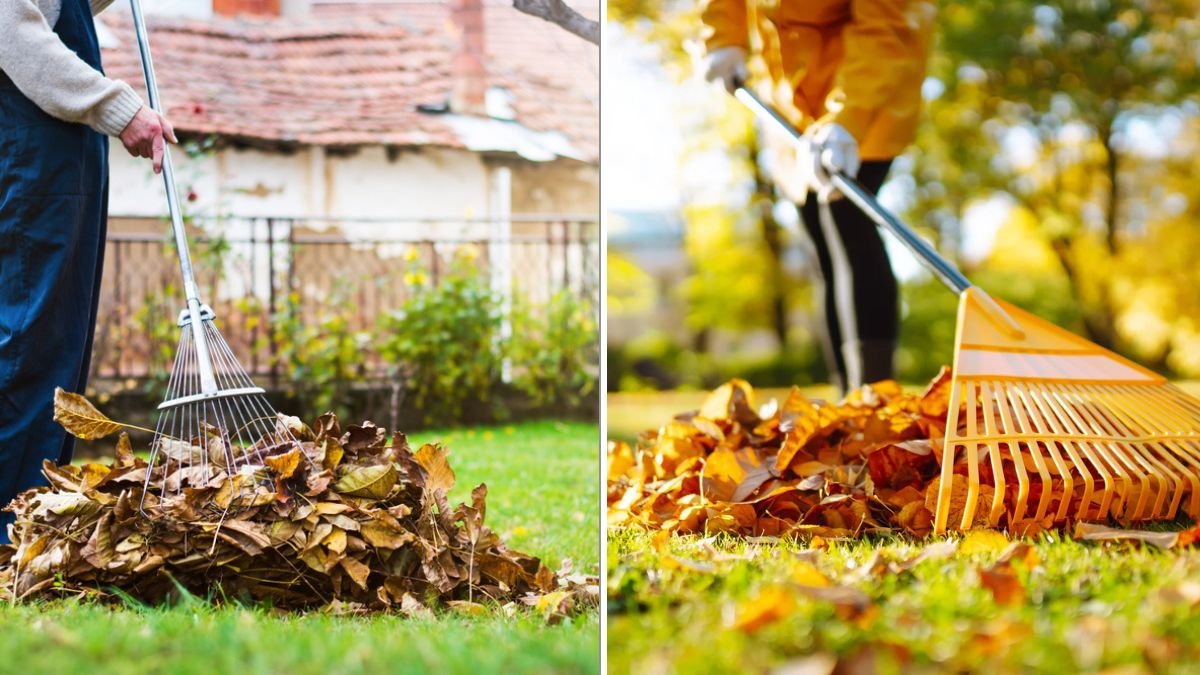As the crisp air of autumn rolls in and trees burst into shades of gold and crimson, there’s one chore that comes hand-in-hand with the beauty—raking leaves. While it might seem like a simple, even nostalgic task, many homeowners unknowingly make mistakes that can harm their lawn, waste time, or lead to unnecessary back strain.
Raking correctly can actually improve your lawn’s health and prepare it for winter. Done poorly, it can lead to damaged grass, soil compaction, or even safety issues. Before you grab your rake and head outside, let’s look at the seven most common mistakes to avoid when raking leaves—and how to do it the right way.
1. Waiting Too Long to Start Raking
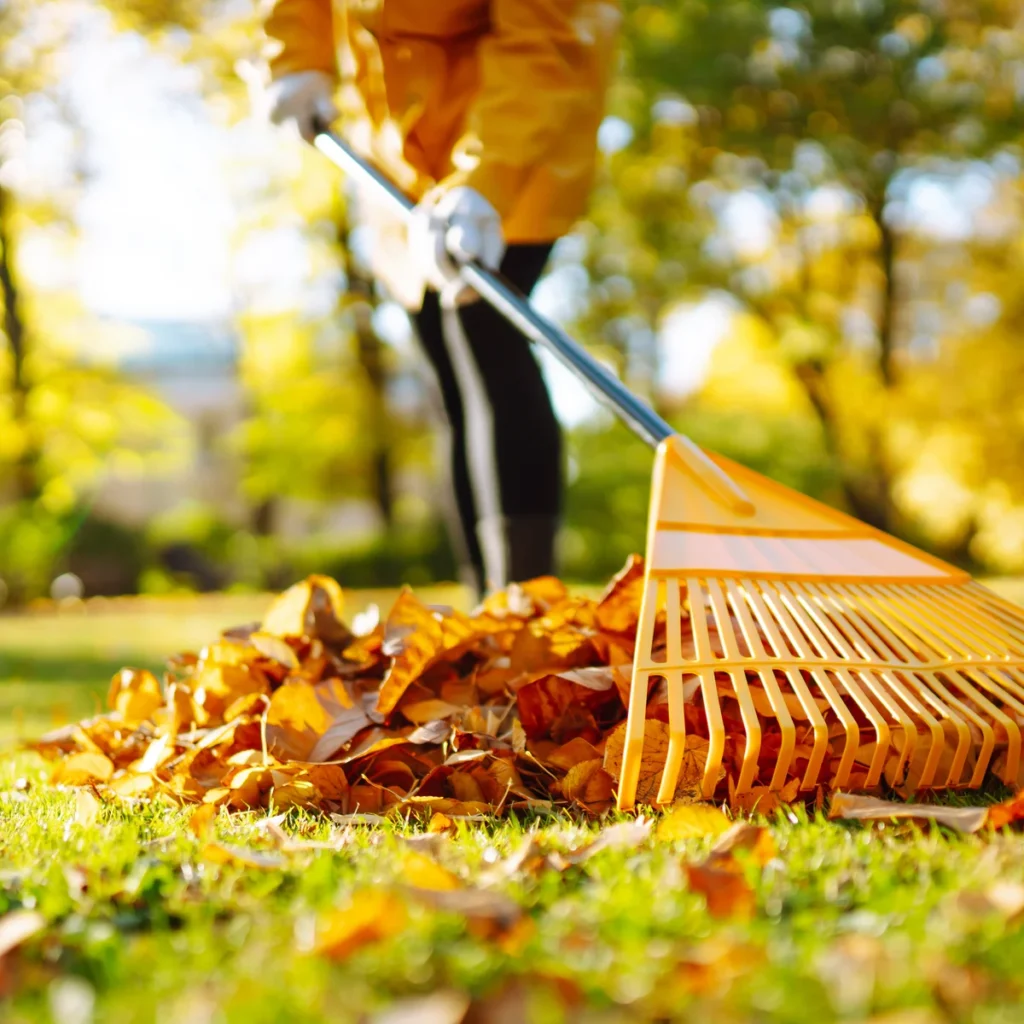
One of the biggest mistakes homeowners make is putting off leaf cleanup until every last leaf has fallen. It might feel efficient to tackle it all at once, but waiting too long allows leaves to pile up into thick, soggy mats that can smother your lawn.
When wet leaves sit too long, they:
- Block sunlight and air circulation
- Trap moisture against the grass, leading to mold and fungal growth
- Encourage pests such as slugs, worms, and even rodents
The fix:
Start raking early and often. Begin as soon as you notice a thin layer covering the grass, and repeat weekly until most trees are bare. Regular raking prevents buildup, making each session faster and easier.
If you prefer a lower-effort method, use a mulching mower to shred light leaf layers into fine pieces that decompose and enrich the soil.
2. Using the Wrong Rake
Not all rakes are created equal, and using the wrong type can turn a simple task into back-breaking labor. Many people grab a small or heavy garden rake that’s meant for soil, not leaves.
What happens when you use the wrong rake:
- You’ll tire out faster and cover less area
- You can tear up grass roots or compact the soil
- The job takes much longer than necessary
The fix:
Choose a lightweight, wide leaf rake—ideally between 24 and 30 inches wide—with flexible plastic or metal tines that glide easily over grass without pulling it up. Ergonomic handles or adjustable grips can make a huge difference for comfort and efficiency.
Bonus tip: Consider a rake with a curved edge or a built-in grabber tool—it allows you to scoop and bag leaves easily without constant bending.
3. Raking Wet Leaves
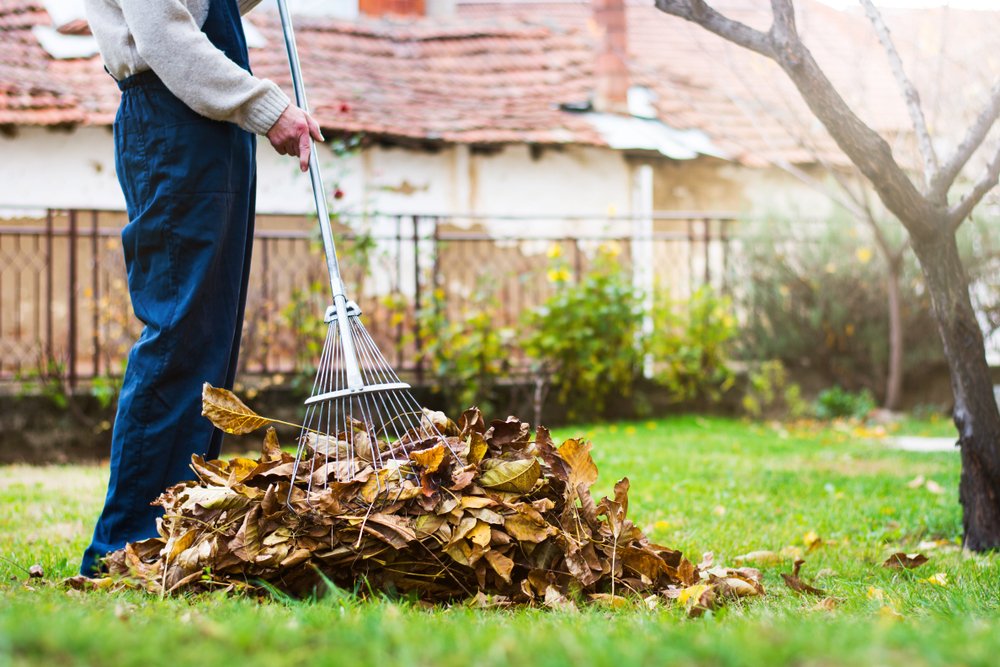
Raking after rain might seem tempting, but it’s one of the fastest ways to make your job miserable. Wet leaves are heavy, slippery, and prone to clumping. They can also cause strain on your back and shoulders—and worse, they can tear at the grass underneath.
Why this matters:
- Wet leaves stick together, making them harder to move.
- They can damage grass blades when dragged across the lawn.
- Mold and mildew spores are more active in damp conditions, which can irritate allergies or asthma.
The fix:
Wait until the leaves are dry and crisp—ideally mid-morning after the dew has evaporated. If your schedule doesn’t allow waiting, consider lightly blowing wet leaves into piles instead of raking until they dry.
4. Raking in the Wrong Direction
Believe it or not, the direction you rake can make a difference. Random or forceful raking can damage grass roots and scatter leaves unevenly, forcing you to redo work.
Common raking errors include:
- Raking too aggressively, tearing up the turf
- Raking uphill or against wind direction
- Creating scattered piles that are hard to bag
The fix:
Rake with the wind and work in one direction across your lawn. Create small, manageable piles every few yards rather than one giant heap. Use a gentle, sweeping motion to move leaves efficiently without disturbing the grass beneath.
If your yard is large, divide it into sections and tackle one area at a time—it’s less overwhelming and more organized.
5. Ignoring Safety and Ergonomics
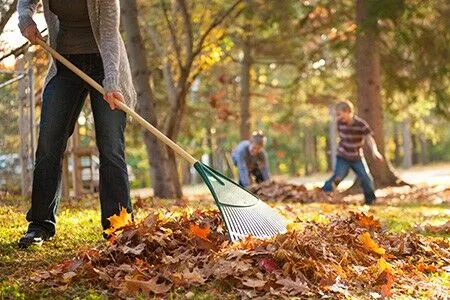
Raking may look harmless, but it’s actually a workout. Many people underestimate the physical strain it puts on the back, shoulders, and knees. Overexertion, poor posture, or repetitive motions can easily lead to soreness or even injury.
Signs you’re raking unsafely:
- Bending at the waist instead of the knees
- Twisting your spine while lifting or tossing leaves
- Working for hours without rest or hydration
The fix:
Use proper body mechanics—stand upright, bend your knees slightly, and shift your weight from foot to foot as you rake. Avoid twisting your torso when gathering piles; instead, move your feet and turn your body with the rake.
Take short breaks every 20–30 minutes to stretch and stay hydrated. If you have a large yard, consider alternating raking with a leaf blower or mower to reduce fatigue.
Pro tip: Wearing lightweight gloves prevents blisters and improves grip, while a back support belt can reduce strain for longer sessions.
6. Bagging Leaves the Wrong Way
Many homeowners rake beautiful piles—then struggle with the most frustrating part: bagging. Overstuffed bags can rip or be too heavy to move, and improper disposal can lead to wasted compost material.
Common bagging mistakes:
- Packing bags too tightly, making them tear or too heavy to lift
- Using non-compostable plastic bags (which often aren’t accepted by local yard waste programs)
- Ignoring valuable nutrients that could be recycled into the soil
The fix:
Use biodegradable paper yard waste bags or reusable bins approved for curbside pickup. Fill bags about three-quarters full to keep them lightweight and easy to move. For even better results, create a compost pile in your yard.
Shredded leaves make excellent compost material—they’re rich in carbon and balance nitrogen-heavy kitchen scraps beautifully. You can also use shredded leaves as mulch around trees, shrubs, and garden beds to retain moisture and suppress weeds.
7. Forgetting the Final Step: Lawn Care After Raking
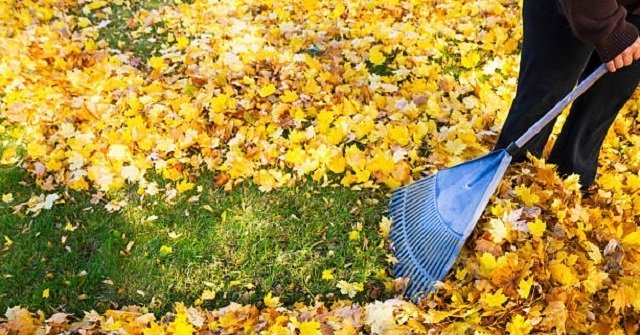
Raking is more than just leaf removal—it’s an opportunity to rejuvenate your lawn before winter sets in. Unfortunately, many people stop once the leaves are gone, missing a chance to strengthen the grass for spring.
Neglecting post-raking care can lead to:
- Compacted soil from foot traffic
- Bare patches or weakened grass roots
- Missed opportunity to feed the soil before dormancy
The fix:
Once your lawn is clear, take a few simple finishing steps:
- Aerate compacted areas to allow air and water to penetrate.
- Overseed bare spots to encourage new growth.
- Fertilize with a fall-specific formula rich in potassium to strengthen roots.
- Water lightly to help nutrients soak in.
This ensures your lawn enters winter strong and wakes up in spring lush and vibrant.
Bonus Tips for Stress-Free Leaf Raking
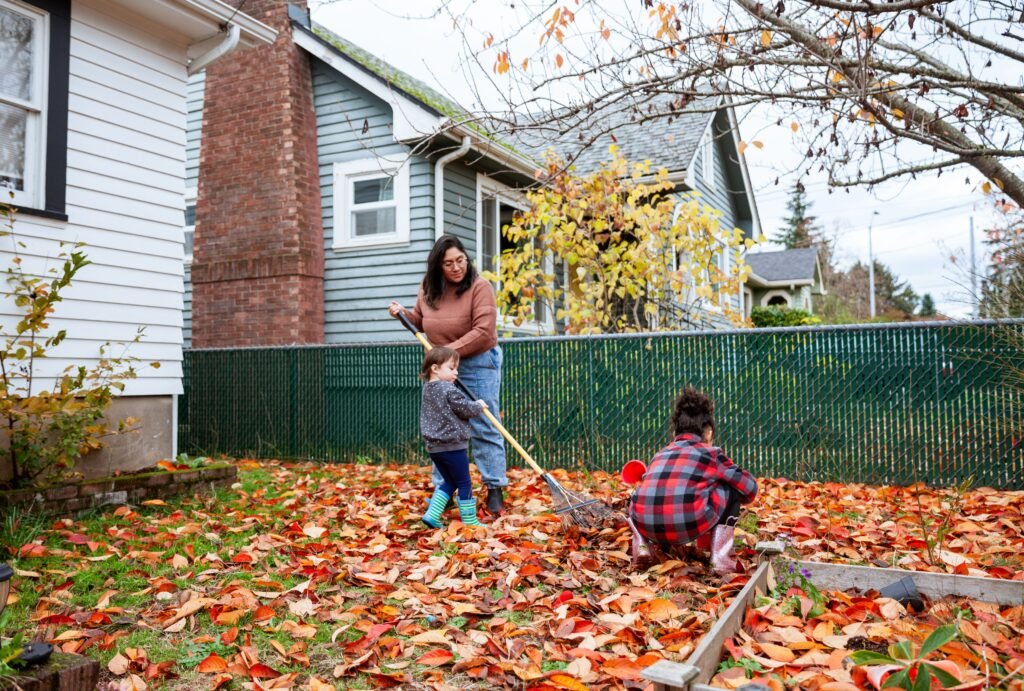
- Work smart, not hard: Rake in cool weather and wear layered clothing to stay comfortable.
- Use tarps: Instead of bagging each pile, rake leaves onto a tarp and drag it to your compost area or curb.
- Mix methods: Combine raking with mulching or blowing for efficiency.
- Don’t rake every leaf: A few scattered leaves can actually benefit the soil when finely chopped—they decompose and return organic matter to your lawn.
Final Thoughts: Turn Raking Into Lawn Care, Not Labor
Raking leaves doesn’t have to be an exhausting, dreaded fall chore. When done thoughtfully, it’s a satisfying ritual that gives your yard the breath of fresh air it needs before winter. Avoiding these seven common mistakes saves time, prevents injuries, and sets your lawn up for success come spring.
So grab your rake, enjoy the crisp autumn breeze, and remember: every leaf you clear today helps your lawn grow greener tomorrow.
